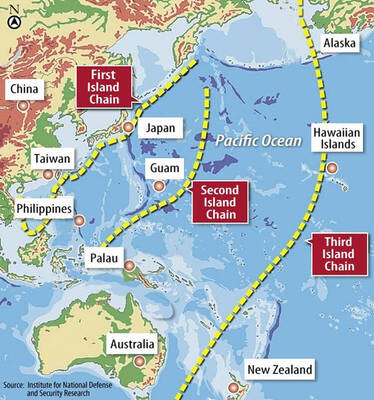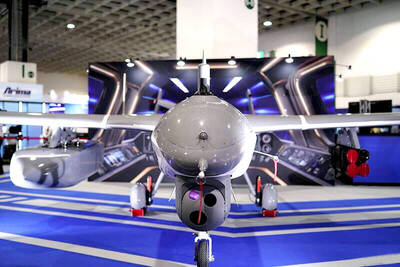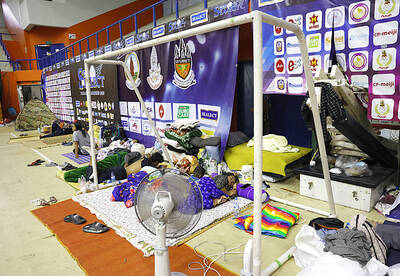The US needs a new, modern arsenal of nuclear weapons to use as a deterrent to attacks from other nations for the remainder of the 21st century, the top military commander for strategic warfare said on Tuesday.
US Air Force General Kevin Chilton, head of the military's Strategic Command, said that if the Defense Department develops an improved, more reliable nuclear weapon, the US will be able to reduce the number of warheads it possesses.
"So long as there are other countries in the world that possess enough nuclear weapons to destroy the United States of America and our way of life, we will have to deter those types of countries," Chilton told reporters at a breakfast meeting. "So I am not in favor of unilateral disarmament."
Comparing today's threat to the Cold War, when the US was at loggerheads with the Soviet Union, Chilton said the principal deterrent was the "massive nuclear threat of destroying each other's countries."
Now, he said, the threat is different, thus the deterrent must also be more nuanced -- ranging from nuclear warheads to conventional weapons and cyber-capabilities.
He said the existing warheads in the US inventory today are "too big, bigger than they need to be."
Critics, however, worry that any such moves by the US could trigger another arms race and a rush by other countries to develop more effective, more usable nuclear weapons.
"This is something we should be very careful about -- the signal we send to other nuclear powers in the world," said Hans Kristensen, director of the Nuclear Information Project for the Federation of American Scientists. "We don't want Russia and China to make more usable and tailored weapons capabilities."
Kristensen said members of the US Congress had already expressed concerns that developing weapons with lower yields would make them more usable.
"It's a good thing that we have weapons that are not very usable," he said. "The worst situation would be where they are more likely to be used."
Chilton said that the US had significantly reduced the number of nuclear weapons it now has in its active arsenal. By 2012, he said, the number would be reduced to about one-quarter of the total during the Cold War.
The 2002 Moscow treaty requires that the US reduce its operationally deployed warheads to 1,700-2,220 by December 2012. In an exchange of data early last year, Russia claimed to have 4,162 strategic warheads and the US 5,866 in its arsenal.
Chilton said the military can use as a deterrent either a large stockpile or a more modern, responsive weapon in smaller numbers. He advocated the latter, saying that would be a smarter way to reduce nuclear inventories.
At the same time, he acknowledged that the warheads are powerful and terrible weapons.
"I'm a father too, with children, and I would love to have them grow up in a nuclear-free world," Chilton said. "But ... I also want them to grow up free. And as long as we have other nations out there with nuclear capabilities ... then we need to have a nuclear deterrent force."

The US government has signed defense cooperation agreements with Japan and the Philippines to boost the deterrence capabilities of countries in the first island chain, a report by the National Security Bureau (NSB) showed. The main countries on the first island chain include the two nations and Taiwan. The bureau is to present the report at a meeting of the legislature’s Foreign Affairs and National Defense Committee tomorrow. The US military has deployed Typhon missile systems to Japan’s Yamaguchi Prefecture and Zambales province in the Philippines during their joint military exercises. It has also installed NMESIS anti-ship systems in Japan’s Okinawa

‘WIN-WIN’: The Philippines, and central and eastern European countries are important potential drone cooperation partners, Minister of Foreign Affairs Lin Chia-lung said Minister of Foreign Affairs Lin Chia-lung (林佳龍) in an interview published yesterday confirmed that there are joint ventures between Taiwan and Poland in the drone industry. Lin made the remark in an exclusive interview with the Chinese-language Liberty Times (the Taipei Times’ sister paper). The government-backed Taiwan Excellence Drone International Business Opportunities Alliance and the Polish Chamber of Unmanned Systems on Wednesday last week signed a memorandum of understanding in Poland to develop a “non-China” supply chain for drones and work together on key technologies. Asked if Taiwan prioritized Poland among central and eastern European countries in drone collaboration, Lin

Renewed border fighting between Thailand and Cambodia showed no signs of abating yesterday, leaving hundreds of thousands of displaced people in both countries living in strained conditions as more flooded into temporary shelters. Reporters on the Thai side of the border heard sounds of outgoing, indirect fire yesterday. About 400,000 people have been evacuated from affected areas in Thailand and about 700 schools closed while fighting was ongoing in four border provinces, said Thai Rear Admiral Surasant Kongsiri, a spokesman for the military. Cambodia evacuated more than 127,000 villagers and closed hundreds of schools, the Thai Ministry of Defense said. Thailand’s military announced that

CABINET APPROVAL: People seeking assisted reproduction must be assessed to determine whether they would be adequate parents, the planned changes say Proposed amendments to the Assisted Reproduction Act (人工生殖法) advanced yesterday by the Executive Yuan would grant married lesbian couples and single women access to legal assisted reproductive services. The proposed revisions are “based on the fundamental principle of respecting women’s reproductive autonomy,” Cabinet spokesperson Michelle Lee (李慧芝) quoted Vice Premier Cheng Li-chiun (鄭麗君), who presided over a Cabinet meeting earlier yesterday, as saying at the briefing. The draft amendment would be submitted to the legislature for review. The Ministry of Health and Welfare, which proposed the amendments, said that experts on children’s rights, gender equality, law and medicine attended cross-disciplinary meetings, adding that